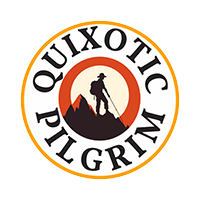While there is certainly some truth to the idea that you can—and absolutely should—follow your nose and gut when looking for food on a road trip through the Balkans, there were a few spots and suggestions from my recent three weeks there that I can’t help but mention.
If I took nothing else away from this trip, it would be a newfound love for Albanian food, something I had never really experienced. Since I left Albania and Kosovo, I have been exploring recipes to cook my own when I return home, a testament to the way the food—just like the countries themselves—left such an immediate impact.
TYMI in Tirana, Albania was an absolute gem near the center of the city, but to really appreciate it, make sure that you ask the server to give you a collection of dishes. The menu is a bit overwhelming, and it’s easy to end up ordering a quick kebab when what you want is an appetizer of sizzling, crispy feta and fërgesë, a cheese, peppers, and vegetable dish that will have you searching for recipes before you leave the place. TYMI also features an incredibly eclectic look (think children’s cartoon shows on TV screens, a hippy van from the 60s converted to outdoor seating, and old bikes hanging on the walls, as well as a great selection of beer on tap.
In Prizren, Kosovo, I had another lunch that was a sample of local fare at the Tiffany Hotel and Restaurant. I can’t

say that I have the knowledge to compare Albania’s and Kosovo’s cuisine, but Tiffany is a local institution for a reason. From the perfectly cooked Balkan flatbread to the beet and bean salad, the Elbasan Tava (lamb and rice baked with a mixture of yogurt and egg) to the varieties of tzatziki-inspired sauces, lunch there was one of the best meals I have enjoyed in any of my travels.
Just outside the walls of the Old Town in Kotor, Montenegro, Marenda Grill House was so incredible that I had to go twice. If you are a meat eater, this is the place for you, featuring dry-aged steaks and an assortment of grilled meats. I had the Marenda Mix both times I visited but was able to sample the pasta and chef’s special, a sesame chicken dish that was inventive and delicious. Attentive service, excellent, generous portions of food, and a local Montenegrin hefeweizen make this the place to visit in Kotor.
When you tell people in Sarajevo that you plan to drive to Mostar, they will tell you two things: that people from the city almost always try to get to the lake during the hot days of the summer and that you need to stop for lamb in Jablanica. They’re right on both counts. The lake is a beauty, rivaling Lake Bled in its color and appeal, and the lamb is plentiful and delicious. While there were a few larger spots with parking lots filled with tour buses, Lamb House had smaller crowds, an incredible view of the water, and excellent lamb spinning over the fire outside the front door.
In Sarajevo itself, there are so many great options for burek and cevapi, but the highlight was, once again on this trip, the Bosnian coffee, which puts a great little twist on the Turkish coffee available throughout the region. My favorite spot was Morica Han, which sits in a courtyard of what was once an Ottoman guesthouse, with stables for the horses below and rooms for the traders above. The coffee was especially rich here, in a space often frequented by students, and the tree-filled courtyard offers a welcome respite from the often intense sun in Sarajevo. Once you’ve wandered the bazaar and purchased your copper coffee pot and cups, make sure to stop and have it prepared by those who have mastered it.
And while I would hesitate to ever suggest that I know the best place for cevapi in Sarajevo, the soccer-themed Ćevabdžinica Željo merely asked “how many” when I arrived, knowing that everyone who comes in is there for a portion of bread and grilled minced meat.
For drinks, two broad recommendations will suffice. All of the countries are heavily into coffee culture, and you should do as the locals do and embrace it. Take your time, enjoy the coffee and conversation, even just as someone watching. If you enjoy something a bit stronger, be sure to enjoy some rakia, a fruit brandy found almost everywhere in the Balkans and made of every imaginable kind of fruit. It packs a punch, but don’t be surprised if you’re offered it for breakfast. While I can’t imagine trying moonshine back in the states, the homemade stuff is where it’s at.
A final note: if a woman at a roadside stand near Blajag, Bosnia offers you “lavender juice,” a concentrate you can mix with water to make a refreshing drink, buy it. Twice.
As a whole, other than one unfortunate stop in Sofia and one restaurant in the Serbian part of Bosnia that seemed unwilling to give me a menu or food, the culinary experience of the Balkans was one of the best I have experienced in my travels. Plentiful, hearty food is the norm here, almost always served with a smile at an affordable price.




